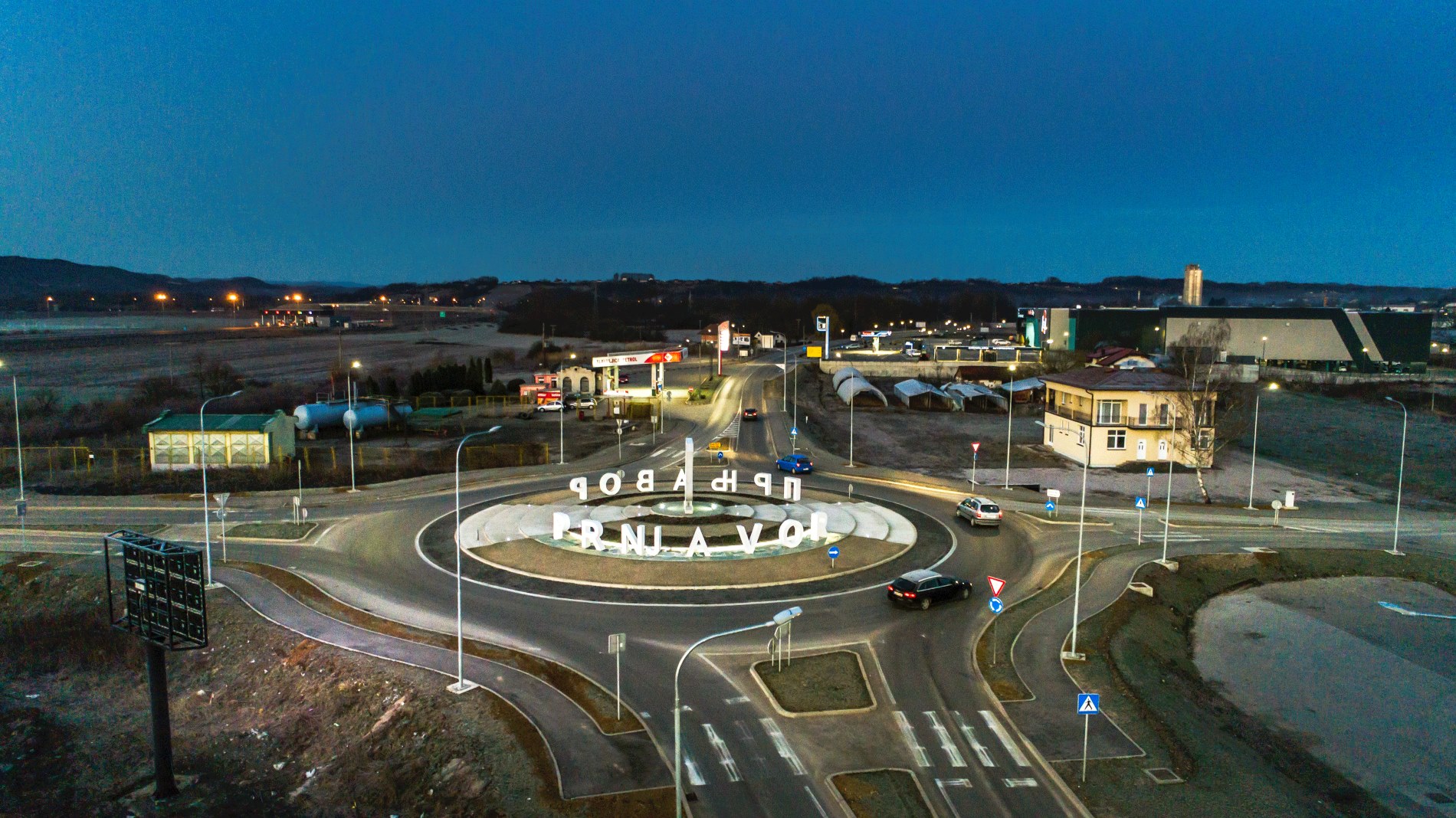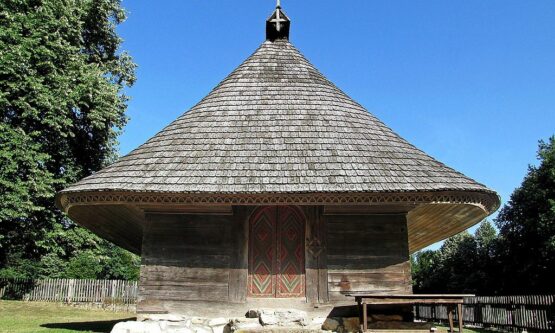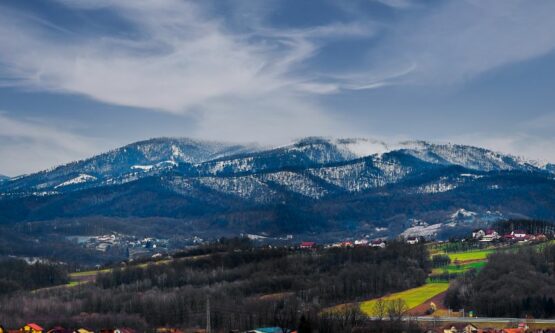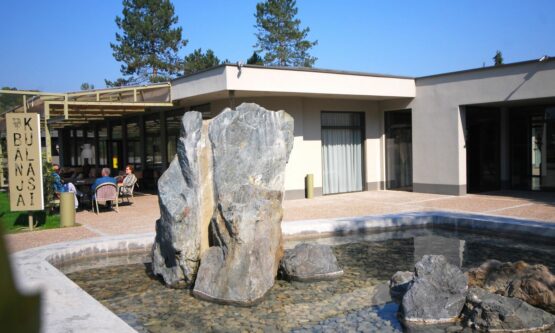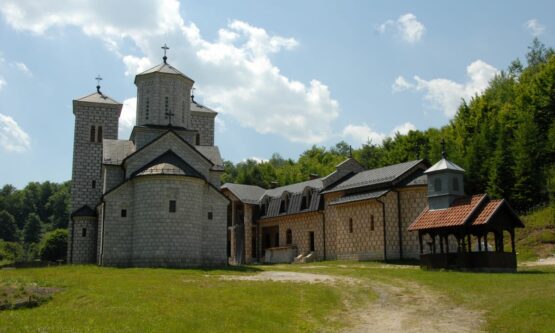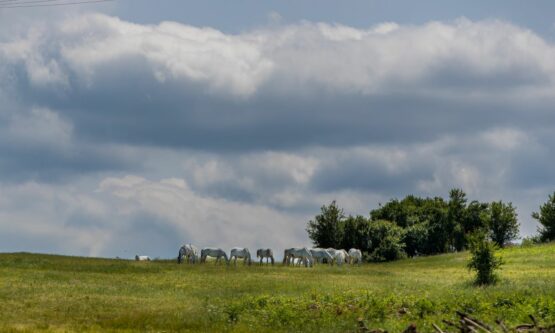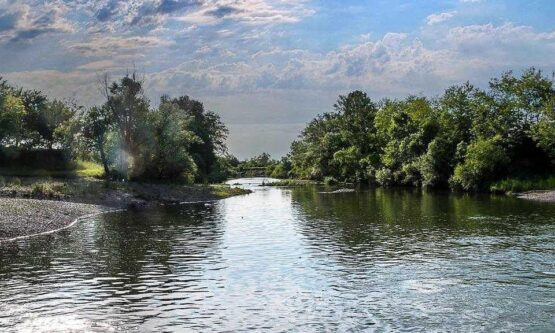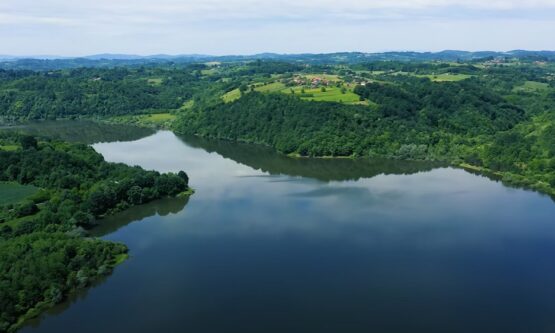Welcome to Prnjavor
Located in the basin of the Ukrina River, between the Motajica mountains in the north and Ljubić in the south, the municipality of Prnjavor lies between Derventa and Banja Luka.
From a tourist perspective, the municipality of Prnjavor boasts a rich tourist potential. Nature has endowed this area with diverse natural complexes, while over the centuries, the people have created cultural and historical motifs.
Within the municipality, you can find: the far-famed Kulaši Spa, the Vučijak Lipizzaner Stud Farm, a wooden church, the Stuplje Monastery, the Church of St. Anthony of Padua, and the Ukrainian Church. It is also important to mention hunting and fishing tourism.
Culture
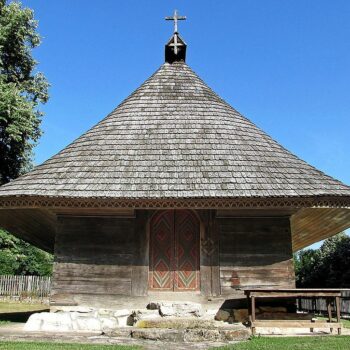
It is believed that Prnjavor was founded in the 16th century, although the first written record of the settlement of Prnjavor dates back to the late 17th century and can be found in an Austrian military report of an unknown author from the period 1688-1699. A specific feature of this region is its ethnic diversity due to the presence of a large number of peoples and nationalities living in the municipality of Prnjavor, which is why this region has been called “Little Europe”.
The Log Cabin Church in Palačkovci was built in 1843. Due to its architectural and aesthetic value, it was declared a national monument of Bosnia and Herzegovina. It is assumed that the Stuplje Monastery was built in the 13th century, but the foundations of the Monastery were only discovered in the mid-1994, since when the renovation of this medieval monastery has been ongoing. The City Mosque with a Harem in Prnjavor was, according to some written records, built in 1800, and in 2003, the Harem of the City Mosque in Prnjavor was declared a national monument and placed under state protection.
The first Ukrainian church in the Balkans was built in Prnjavor in 1910.
Nature
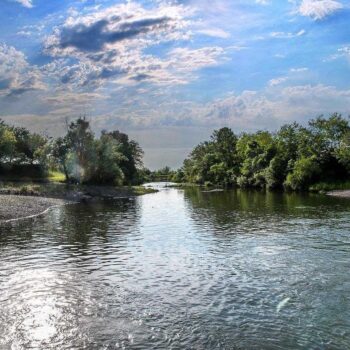 The municipality of Prnjavor is characterized by its hilly terrain in the southern part, the Ljubic mountain, and numerous small rivers and streams flowing into the Ukrin river basin. A particularly notable feature of Prnjavor is the renowned Kulasi spa, famous for its healing waters. The Drenova Lake is an important economic, fishing, and tourist site, as is the Prnjavor fish farm. The meadows near the town are adorned by the Vucjak Lipizzaner stud farm. The Ukrina river flows along the eastern and southern edges of the municipality of Prnjavor. According to one legend, it got its name from the Hungarian word ‘Ugrina’, meaning ‘ducat’. A unique phenomenon occurs in mid-August when, during evenings and mornings, swarms of water bloom appear above and around the Ukrina river.
The municipality of Prnjavor is characterized by its hilly terrain in the southern part, the Ljubic mountain, and numerous small rivers and streams flowing into the Ukrin river basin. A particularly notable feature of Prnjavor is the renowned Kulasi spa, famous for its healing waters. The Drenova Lake is an important economic, fishing, and tourist site, as is the Prnjavor fish farm. The meadows near the town are adorned by the Vucjak Lipizzaner stud farm. The Ukrina river flows along the eastern and southern edges of the municipality of Prnjavor. According to one legend, it got its name from the Hungarian word ‘Ugrina’, meaning ‘ducat’. A unique phenomenon occurs in mid-August when, during evenings and mornings, swarms of water bloom appear above and around the Ukrina river.
Adventure
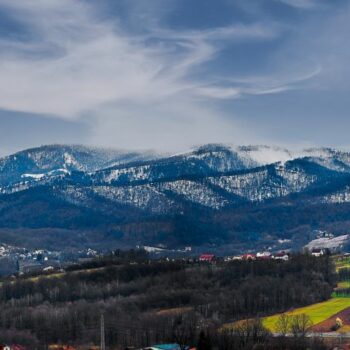 Ljubic Mountain boasts immense potential for the development of extensive hiking and cycling networks. For a taste of what’s to come, embark on the existing 18-kilometer trail that winds from Drenova Lake to the historic Stuplje Monastery.
Ljubic Mountain boasts immense potential for the development of extensive hiking and cycling networks. For a taste of what’s to come, embark on the existing 18-kilometer trail that winds from Drenova Lake to the historic Stuplje Monastery.
Gastro
 Fazan Winery is situated in Lisnja, not far from the municipality of Prnjavor, and spans across approximately 4 hectares. The first vine cuttings were planted in 2010. The vineyard’s assortment is carefully selected with a 60% focus on red grape varieties and 40% on white grape varieties. Among the red varieties, you can find Pinot Noir, Cabernet Sauvignon, Cabernet Franc, Syrah, Frankovka, and Merlot. Chardonnay dominates the white grape varieties, followed by Riesling. In addition to top-quality wines, the winery has recently produced the first champagne in Bosnia and Herzegovina, named Perles d’Amor.
Fazan Winery is situated in Lisnja, not far from the municipality of Prnjavor, and spans across approximately 4 hectares. The first vine cuttings were planted in 2010. The vineyard’s assortment is carefully selected with a 60% focus on red grape varieties and 40% on white grape varieties. Among the red varieties, you can find Pinot Noir, Cabernet Sauvignon, Cabernet Franc, Syrah, Frankovka, and Merlot. Chardonnay dominates the white grape varieties, followed by Riesling. In addition to top-quality wines, the winery has recently produced the first champagne in Bosnia and Herzegovina, named Perles d’Amor.
The Vucijak stud farm
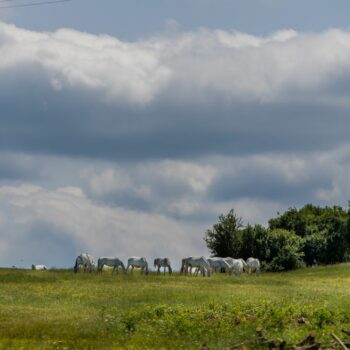 The oldest company in the municipality of Prnjavor is the Lipizzaner stud farm Vucijak. Founded in 1946 for the “needs of the people’s army,” it was named after the nearby hill Vučijak. It owns about a hundred horses and is the only stud farm in Bosnia and Herzegovina with purebred Lipizzaner. The Vucijak stud farm currently breeds six lines and 15 families of the Lipizzaner breed. The breed originated in the 16th century and became one of the most famous in the world. Due to its graceful appearance, suitability for dressage, and work capabilities, it has been very well received by all segments of society. This breed today represents the cultural values of Europe
The oldest company in the municipality of Prnjavor is the Lipizzaner stud farm Vucijak. Founded in 1946 for the “needs of the people’s army,” it was named after the nearby hill Vučijak. It owns about a hundred horses and is the only stud farm in Bosnia and Herzegovina with purebred Lipizzaner. The Vucijak stud farm currently breeds six lines and 15 families of the Lipizzaner breed. The breed originated in the 16th century and became one of the most famous in the world. Due to its graceful appearance, suitability for dressage, and work capabilities, it has been very well received by all segments of society. This breed today represents the cultural values of Europe
Drenova Lake
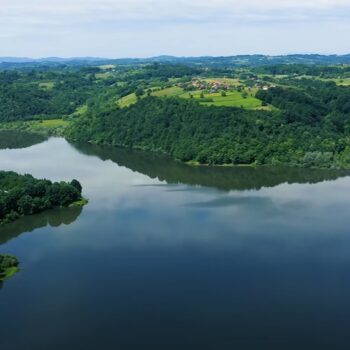 Situated approximately ten kilometers outside the city, the man-made Drenova Lake is a regional gem for anglers, particularly those seeking trophy-sized catfish and carp. This designated fishing reserve has hosted record-breaking catfish catches, with individuals tipping the scales at 104 and 96 kilograms. The lake’s diverse fish population includes a variety of whitefish species, such as pike, perch, asp, and chub. To preserve the lake’s ecosystem, swimming and boating are not permitted. Regular stocking, protection, and maintenance efforts ensure the lake’s health, while its picturesque natural setting offers a serene escape for visitors.
Situated approximately ten kilometers outside the city, the man-made Drenova Lake is a regional gem for anglers, particularly those seeking trophy-sized catfish and carp. This designated fishing reserve has hosted record-breaking catfish catches, with individuals tipping the scales at 104 and 96 kilograms. The lake’s diverse fish population includes a variety of whitefish species, such as pike, perch, asp, and chub. To preserve the lake’s ecosystem, swimming and boating are not permitted. Regular stocking, protection, and maintenance efforts ensure the lake’s health, while its picturesque natural setting offers a serene escape for visitors.
Kulasi Spa
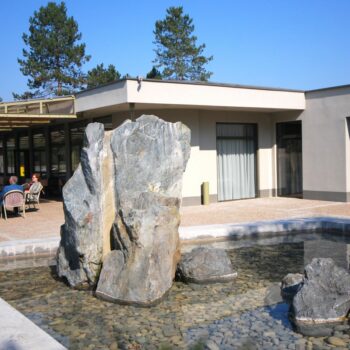 Located 14 kilometers from Prnjavor, on the road to Teslic, at the foot of Mount Ljubic, lies Kulasi Spa, a spa known since the Austro-Hungarian period. The centuries-old tradition of Kulasi Spa is based on springs with exceptionally healing and unique highly alkaline sulfide oligomineral hypothermal water with a temperature of 27 to 28 degrees Celsius, which is bacteriologically completely sterile with constant quality and an incredibly high pH value of 11.75. According to current knowledge, in Europe, besides this spring, only two more springs with similar water characteristics are known, and in the world an additional four, which ranks the water of Kulasi Spa among the world’s rarities.
Located 14 kilometers from Prnjavor, on the road to Teslic, at the foot of Mount Ljubic, lies Kulasi Spa, a spa known since the Austro-Hungarian period. The centuries-old tradition of Kulasi Spa is based on springs with exceptionally healing and unique highly alkaline sulfide oligomineral hypothermal water with a temperature of 27 to 28 degrees Celsius, which is bacteriologically completely sterile with constant quality and an incredibly high pH value of 11.75. According to current knowledge, in Europe, besides this spring, only two more springs with similar water characteristics are known, and in the world an additional four, which ranks the water of Kulasi Spa among the world’s rarities.
Stuplje Monastery
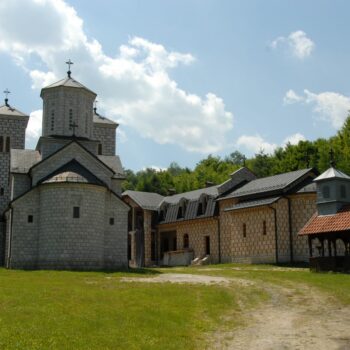 Stuplje Monastery is located on the border of the municipalities of Prnjavor and Celinac, along the Manastirica River. According to legend, in the place where the monastery stands today, there used to be many posts for beating hemp, and overnight a monastery appeared there. The monastery was dedicated to Saint Archangel Michael, and the hill above it was called, and still is called, Mihajlovac. It is believed that Stuplje Monastery was built in the 13th century, around the same time as Liplje Monastery (1249). Therefore, they have always been mentioned together in books, as twin brothers and victims of burnings during Ottoman rule. The foundations of Stuplje Monastery were only discovered in the mid-1994, and the restoration of this medieval monastery has been ongoing since then.
Stuplje Monastery is located on the border of the municipalities of Prnjavor and Celinac, along the Manastirica River. According to legend, in the place where the monastery stands today, there used to be many posts for beating hemp, and overnight a monastery appeared there. The monastery was dedicated to Saint Archangel Michael, and the hill above it was called, and still is called, Mihajlovac. It is believed that Stuplje Monastery was built in the 13th century, around the same time as Liplje Monastery (1249). Therefore, they have always been mentioned together in books, as twin brothers and victims of burnings during Ottoman rule. The foundations of Stuplje Monastery were only discovered in the mid-1994, and the restoration of this medieval monastery has been ongoing since then.


